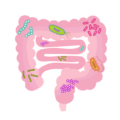Do We Really Understand Stress?
Sometimes, we use a relatively meaningless phrase when we say that a given person “is all stressed out”. I came to the conclusion that the word “stress”, as used in medicine, needed to have some discussion and explanation, even though I have addressed the subject previously. I turned to the 1946 work of Hans Selye. Selye was a medical student in Hungary who described how he got the idea of studying the impact of stress on the human body. As is common in medical education, the professor would bring patients into the classroom. Each patient had a known diagnosis, such as Rheumatoid Arthritis, or Parkinson’s disease, for example. The patient’s clinical course, including the symptoms, the physical findings observed by a physician and the response to treatment, would be discussed by the professor. However, Selye was not listening to the professor and not paying much attention to how the diagnosis was derived. He was looking at the demeanor of each patient. He decided that they all looked more or less the same. The facial expression was that of long-suffering and he concluded that each was expressing the “stress” from the impact of the disease, no matter what cause could be attached. This must surely make us think what this means for our present concepts of human disease. Does the present paradigm model totally answer the basic underlying reason for our loss of health? Is the everlasting search of the pharmaceutical industry for the right treatment of each and every disease the right track for medicine or not?
Selye’s Answer
After graduation, Selye immigrated to Canada and set up an Institute in Montréal that ultimately became known as the Stress Institute. He chose the rat as the subject of his studies and over many years, they were detailed and meticulous. Stress was imposed on each of his animal subjects by the performance of cruel trauma or by forced exercise to exhaustion. Many different laboratory studies were repeatedly performed as each animal became sicker from the imposed continued stress. Note that “stress” is used as the application of an attack that the animal has to survive (adapt to) or perish from exhaustion. He came to the conclusion that there was a set of predictable pathophysiologic changes as the stress continued. These consecutive changes in the blood and tissues defined the state of health (the ability to resist or adapt) in the experimental animal that he then called the General Adaptation Syndrome (GAS). It had three stages; the state of alarm, was the recognition of an attack (the stress); the state of resistance was how the animal defended itself against the attack and the state of exhaustion precluded death.
The remarkable thing about the conclusions of Selye was that the first two stages were dependent on the mobilization of the chemically produced cellular energy required to meet resistance and the third stage was dependent on failure to produce the required energy. At that time, little was known concerning the synthesis of energy in the human body. Now we know how energy is produced, the GAS makes perfect sense in determining how we perceive health and disease. Our lives are spent in a hostile environment where our preservation is of no interest to Mother Nature. Earthquakes, tsunamis, other natural events and our own physical actions, injure us if they do not kill. We are surrounded by a multitude of potentially lethal microorganisms. Our brains also require huge amounts of energy to meet the mental stresses of modern civilization.
Selye’s experiments were designed to attack the constitution of his experimental animals to see how they resisted or adapted. The laboratory studies of blood and tissues became the markers of the adaptive resistance. One of his students was able to reproduce the GAS by causing the experimental animal to become deficient in vitamin B1 (thiamine), thus demonstrating the role of energy in the first two stages and its deficiency in the third. He formulated the idea that human disease represented what he called “the diseases of adaptation”.
I was fortunate to be able to visit Dr. Selye and I discovered that he was confident in predicting that his work would be at the center of 21st-century medicine. Although I found that it is mentioned online, it certainly is not at the center of our medical approaches today. I concluded that his work did not gain sufficient attraction because of the cruelty of his experiments. Perhaps we should consider that the experimental animals sacrificed their lives to our well-being, because I believe that the GAS provides reasonable answers to so many of the mysteries that remain in modern medicine. The trouble is that it trashes the medical model that proclaims each and every disease as a separate and unique entity with its own particular cause and symptom treatment. Obviously, if the GAS represents the truth, it should eventually become acceptable as a prescription for addressing the reality of health and disease.
Of Energy and Oxidation
As repeated in many posts on this website, oxidation is the key to energy production. The energy is consumed by the complex mechanisms of defense with which the human body is equipped and it is carefully regulated. Too little oxidation is as bad as too much, since these extremes emphasize oxidation inefficiency. As in all things, moderation is optimum. These extremes are called oxidative stress. The balance is maintained by vitamins that are known as oxidants (they enable oxygen to be consumed) and antioxidants (they keep the oxidation from getting out of control). For example, without the scientific details, thiamine acts always as both an oxidant and an antioxidant whereas vitamin C acts as an antioxidant at its usual, natural dose and an oxidant at another. Though circulating antioxidant capacity in the blood is regulated automatically, a study found that antioxidant capacity varied according to the site of the injury. This means, of course, that the damage of trauma is highly dependent on the functional capacity of healthy oxidation in the healing process. We now know that the brain controls the defensive mechanisms that are mobilized in response to infection. Stress must initiate the appropriate physical and mental actions for survival. The physician has to become consciously aware of the extraordinary genius of the human bodies that he/she has the responsibility and privilege to examine and advise.
Reconsidering Selye’s General Adaptation Syndrome
The State of Alarm
The normal human response to any form of danger is the fight-or-flight reflex, something with which most people are quite familiar. It is initiated automatically through activation of the sympathetic branch of the autonomic nervous system as it prepares an individual to meet the foe. It does not define the nature of the stress that may be physical (trauma, infection) or mental (divorce, business deadlines etc.). Part of the reflex, all of which depends on healthy metabolism, is anxiety or fear (a sense of alarm). However, hypoxia or pseudo-hypoxia (a lack of oxygen or oxidation) is dangerous to the organism and will trigger the fight-or-flight reflex. This would, for example, enable the affected person to escape from a physical cause such as a bedroom gradually filling with an odorless poison gas. However, pseudo-hypoxia, caused by deficiency of thiamine, like hypoxia, will also trigger the fight-or-flight reflex. Because the affected individual does not know that thiamine deficiency is the underlying cause, there is no visual or tactile perception of the source of danger. Thus the sensations of the reflex are called symptoms and are considered to be due to an illness. This is referred to as a “panic attack” or “panic disorder”. It also explains why these attacks are associated with many other symptoms such as the heart racing, faster breathing or unusual sweating, all part of the fight-or-flight reflex.
It is easy to understand how this misperception of both doctor and patient becomes a “bone of contention”. The doctor sees it as a patient’s state of unnecessary worry, leading to the erroneous diagnosis of “psychological”. No consideration is given to the fact that psychological perceptions are produced by electrochemical brain reactions that consume energy. The patient is often somehow considered to be responsible by “giving in” to self pity, an absurdity that is hard to swallow. The same thing happens sometimes when, in the presence of thiamine deficiency, a trivial injury to a limb may give rise to persistence of unexpectedly severe pain. This used to be known as “sympathetic dystrophy” and is now known as “complex regional pain syndrome”. The pseudo-hypoxia is causing a state of alarm to persist by extending the sympathetically driven reflex to the affected limb. The pain is a result of highly abnormal signals sent from the hypoxic (pseudo-hypoxic) limb to the sensory system in the brain. It explains why an injection of B complex might relieve an otherwise totally inexplicable limb pain caused by pseudo-hypoxia.
The State of Resistance
By extrapolating the observations and laboratory data from the stressed animal to the human, the GAS might be thought of as “the illness”. It might also be thought of as the actions of defense against the attacking agent. I would like to provide a personal example. When I was a boy, before the antibiotic age, a splinter in my foot gave rise to ascending infection in the leg that could have led to general septicemia and ultimately death. My mother was instructed by a homeopathic doctor to wrap my whole leg in strips of blankets that had been boiled and allowed to cool enough to apply. I became delirious with a temperature of 104 or 105 but the ascending infection was conquered by improving my state of resistance. My immune system had been stimulated in its fight against the foe (the attacking bacteria) probably because of the high body temperature.
Fever is an important part of body defense because bacteria are programmed to be at their most virulent at normal body temperature. The high body temperature renders the action of the attacking bacteria less efficient. The state of resistance can be triggered falsely. For example, two children have been described in the medical literature whose attacks of “febrile lymphadenopathy” (swollen neck glands from inflamed throat) were caused by their indulgence with sweets, causing thiamine deficiency pseudo-hypoxia. The pseudo-hypoxia from thiamine deficiency caused a continued state of stress and kept triggering a false state of resistance at intervals, a perspective that appeared to be a genuine response to an attacking microorganism. On the other hand, it could have been a grossly exaggerated defense against a microorganism that would not have otherwise attacked.
The State of Exhaustion
What Selye concluded was that the stressed organism had consumed huge amounts of energy during the state of resistance and could no longer supply it. If energy metabolism is the center of health and its failure the center of disease, this work by Selye makes perfect sense. Perhaps the state of exhaustion might be what we now call “shock”, a phenomenon which has resisted explanation. It also explains why thiamine deficiency is frequently found in critically ill patients in the emergency room.
We Need Your Help
More people than ever are reading Hormones Matter, a testament to the need for independent voices in health and medicine. We are not funded and accept limited advertising. Unlike many health sites, we don’t force you to purchase a subscription. We believe health information should be open to all. If you read Hormones Matter, like it, please help support it. Contribute now.
Yes, I would like to support Hormones Matter.
Image by Andrew Martin from Pixabay.















Hyperemesis is a reflection of GI beriberi. If human life is seen as an energy requiring venture, it becomes easy to understand that fatigue is a sensation produced by the brain that warns its owner of diminishing energy availability. That is why thiamine and magnesium treat CFS successfully as well as many other diseases in which fatigue is a common symptom. The brain does its best to give us plenty of warning of danger to life. Another example of warning is the fight-or-flight reflex, of which otherwise inexplicable anxiety may be a symptom when energy metabolism is compromised. Understanding what makes us tick is, in my view, the way that physicians must be trained to use in practice, not in selecting a harmful drug. Linus Pauling offered the term Orthomolecular Medicine and it is now an International Society of Orthomolecular Medicine in Toronto, Canada. May its philosophy spread!!
I’ve been watching all this research come out recently about how Vitamin K, specifically K2 can rescue mitochondria in cancer cells and restore oxidative metabolism thus inducing apoptosis. Apparently K can be also used as an electron carrier. What are your thoughts on this and why is this so if it can be speculated?
https://www.sciencedirect.com/science/article/pii/S2213231718300934
https://www.ncbi.nlm.nih.gov/pubmed/29597144
https://www.ncbi.nlm.nih.gov/pubmed/22582012
Biochemically if one looks at the Krebs Cycle you will see the importance of Vitamin K2 in the respiratoey cycle. Personally I think it a most important vitamin and one should supplement this daily
I read “The Natural way to a trouble free pregnancy” by Dr. John Irwin, on your recommendation. I think he is really on to something.
I have tried to contact Dr. Irwin to ask him in person about some of his findings, but have been unable to make contact. Do you know if he is still alive? If so, do you know how I can contact him?
Thanks,
Dr. Eliason
In surveying HM, I came on this question by Dr Eliason. I apologize for not seeing it at that time. Unfortunately, Dr Irwin has passed on. He was in his 90s when he contacted me and his amazing book has been priced out for unknown reasons. His research showed that a 100 mg oral dose of thiamine given preventively in pregnancy, beginning at about 3 months, completely prevented ALL the complications of pregnancy. This is based on the fact that a mother must supply energy for herself and her fetus. A growing fetus consumes a huge amount of energy and the complications can be seen now, due to the wisdom of John Irwin, as energy failure arising from an incomplete maternal diet. Hyperemesis Gravidarum (pregnancy vomiting) is the first symptom of beriberi, but the complications affect the fetus as well as the uterus, a truly incredible true “breakthrough” for long suffering humanity. It will not be easily accepted because it is cheap as well as being so effective.
Dr. Lonsdale,
Thank you for your writing. I am a practicing pathologist, and I find your writings on Thiamine and the autonomic nervous system fascinating. I’ve been going through all of your blog posts here. I’ve also read your book.
What do you think about nausea and fatigue-without vomiting in pregnancy? My wife suffered from an extreme nausea and fatigue without vomiting during pregnancy. From my reading on hyperemesis gravidarum, it is associated with thiamine deficiency, but most of what I have read associates it with dietary loss from the vomiting, not thiamine deficiency causing the nausea.
I’d like your thoughts.
Nathan Eliason MD